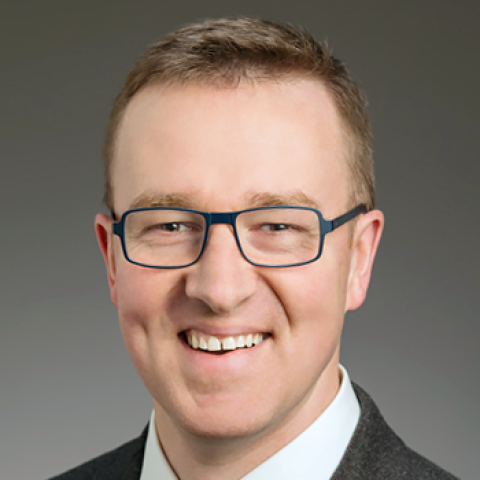
Towards building tissues: engineering complexity through biomaterial design
Stanford Bio-X Frontiers in Interdisciplinary Biosciences Seminar
BRENDAN HARLEY, UNIVERSITY OF ILLINOIS
Dr. Harley's group develops biomaterials that replicate the dynamic, spatially-patterned, and heterogeneous microenvironment found in the tissues and organs of our body. They use this approach to generate new insight regarding how biomaterial cues can instruct cell responses in the context of development, disease, and regeneration.
Advances in the field of tissue engineering are increasingly reliant on biomaterials that instruct, rather than simply permit, a desired cellular response. Instructive biomaterials hold significant promise for clinical applications as well as to enable mechanistic studies in the laboratory. Given tissues are dynamic, spatially-patterned, and inhomogeneous over multiple length and time scales, my lab is developing new approaches to engineer biomaterials at the structural and biomolecular level to replicate these heterogeneities. Our efforts seek to provide new insight regarding the degree of biomaterial complexity required to instruct cell behavior in the context of development, disease, and regeneration. I will describe a collagen biomaterial under development to address barriers preventing regeneration of musculoskeletal tissues such as orthopedic insertions and craniomaxillofacial bones. Here we are using bioinspired design motifs to create composite biomaterials able to improve cell bioactivity and mechanical competence in order to address mechanistic and translational challenges. I will subsequently describe development of a gelatin hydrogel system and microfluidic forming techniques to create libraries of optically-translucent hydrogels containing overlapping patterns of cell, matrix, and biomolecule cues. We are using this platform to explore the coordinated impact of structural, biomolecular, and metabolic cues on niche-mediated regulation of hematopoietic stem cell fate as well as invasion and therapeutic resistance in glioblastoma, the most common and lethal form of brain cancer. I will highlight work that employs these platforms as rheostats to regulate processes such as self-renewal vs. quiescence; regeneration and vascularization; as well as invasion and therapeutic resistance.
March 7th, 2019 at 4:00 PM in Clark Center Seminar Room S360
Hosted by:
Fan Yang, Associate Professor of Orthopaedic Surgery and of Bioengineering, Stanford University
Pre-Seminar March 5th, 2018 at 4:00 PM in Clark S361
